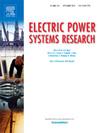Adaptive maximum power point tracking method for photovoltaic systems using step-size reduction and adapted Salp Swarm Optimization for dynamic conditions
IF 3.3
3区 工程技术
Q2 ENGINEERING, ELECTRICAL & ELECTRONIC
引用次数: 0
Abstract
This study introduces an advanced Maximum Power Point Tracking (MPPT) framework to improve the efficiency and stability of photovoltaic (PV) systems under fluctuating irradiance and load conditions. The proposed approach integrates a Step-Size Adaptation Algorithm (SSAA) to reduce power oscillations, a deviation avoidance loop for real-time irradiance detection, and a dual-parameter perturbation algorithm (IPA/VPA) to enhance tracking speed and precision. Additionally, an Adapted Salp Swarm Optimization (ASSO) with a dynamic factor is employed to optimize boost converter performance, ensuring faster convergence and higher stability. Quantitative improvements are demonstrated through comparative analysis, highlighting superior tracking accuracy, reduced steady-state errors, and faster convergence than conventional methods such as Perturb & Observe (P&O) and Incremental Conductance (IncCond). Qualitative evaluations confirm the robustness of the framework against rapid environmental fluctuations, ensuring smooth power transitions and minimal oscillations. Simulation results validate that the combined implementation of ASSO, dual perturbation strategies, and deviation avoidance leads to a highly adaptable and efficient MPPT solution. The proposed framework outperforms existing techniques in terms of accuracy, stability, and energy extraction, making it a reliable solution for real-world PV applications.
基于步长缩减和Salp群优化的光伏系统自适应最大功率跟踪方法
本文介绍了一种先进的最大功率点跟踪(MPPT)框架,以提高光伏(PV)系统在波动辐照度和负载条件下的效率和稳定性。该方法集成了步长自适应算法(SSAA)以减少功率振荡,偏差避免环路用于实时辐照度检测,双参数摄动算法(IPA/VPA)以提高跟踪速度和精度。此外,还采用了一种带有动态因子的自适应Salp群优化算法(aso)来优化升压变换器的性能,确保更快的收敛速度和更高的稳定性。通过比较分析证明了定量改进,突出了优越的跟踪精度,减少了稳态误差,并且比传统方法(如Perturb &;观察(P&;O)和增量电导(IncCond)。定性评估证实了该框架对快速环境波动的鲁棒性,确保了平稳的功率转换和最小的振荡。仿真结果验证了将双摄动策略、双扰动策略和偏差避免相结合的实现可以实现高适应性和高效率的MPPT解决方案。所提出的框架在准确性、稳定性和能量提取方面优于现有技术,使其成为现实世界光伏应用的可靠解决方案。
本文章由计算机程序翻译,如有差异,请以英文原文为准。
求助全文
约1分钟内获得全文
求助全文
来源期刊

Electric Power Systems Research
工程技术-工程:电子与电气
CiteScore
7.50
自引率
17.90%
发文量
963
审稿时长
3.8 months
期刊介绍:
Electric Power Systems Research is an international medium for the publication of original papers concerned with the generation, transmission, distribution and utilization of electrical energy. The journal aims at presenting important results of work in this field, whether in the form of applied research, development of new procedures or components, orginal application of existing knowledge or new designapproaches. The scope of Electric Power Systems Research is broad, encompassing all aspects of electric power systems. The following list of topics is not intended to be exhaustive, but rather to indicate topics that fall within the journal purview.
• Generation techniques ranging from advances in conventional electromechanical methods, through nuclear power generation, to renewable energy generation.
• Transmission, spanning the broad area from UHV (ac and dc) to network operation and protection, line routing and design.
• Substation work: equipment design, protection and control systems.
• Distribution techniques, equipment development, and smart grids.
• The utilization area from energy efficiency to distributed load levelling techniques.
• Systems studies including control techniques, planning, optimization methods, stability, security assessment and insulation coordination.
 求助内容:
求助内容: 应助结果提醒方式:
应助结果提醒方式:


